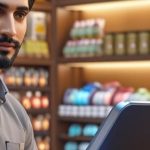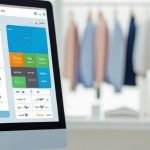How Visual Search Can Enhance Customer Experience
Visual search has been around for a few years, but the technology is just starting to come into its own as a tool to help retailers boost their customer experience.
With the rise of mobile and multichannel retail, business owners are always finding new and innovative ways to make it easier for customers to find the products they need. That’s why the popularity of visual search has skyrocketed over the past few years.
Benefits of visual search for retailers
In the retail world, visual search has the power to make the shopping experience much easier and quicker for customers—and that can yield some serious benefits for retailers and store owners. Customers who have an easier time finding the products they’re looking for are already one step closer to making a purchase.
- Shortcut from search to conversion
The key difference between visual search and keyword search is the former makes it easier for customers to take a mental picture and turn it into an actual product available for purchase without having to think about the right keyword phrase or sifting through thousands of almost-there search engine results. The easier it is for a customer to find the product they’re looking for, the less friction there is in achieving a sale.
- Integrated online and offline shopping experiences
One thing is clear, customers increasingly want multichannel shopping experiences that make it effortless to move from brick-and-mortar store to website to mobile app to anywhere else they want to shop. Visual search is one of the best ways to integrate the online and offline shopping experiences you offer customers. It makes it easy for them to find a wider variety of products on your website and forges a sense of connection between your online store and your customers’ everyday lives in the physical world.
- Less noise
There’s one big hurdle traditional in-store sellers have to jump: the noise of e-commerce. A simple web search can lead to hundreds of pages of nearly identical products, making for some stiff competition online. Connecting your customers to a visual search engine ensures you cater the results to the products you have available.
This helps cut through the noise of online shopping and makes it easier for customers to make a purchasing decision. It also ensures they see specifically what you have to offer.
- Capitalization of social proof and word of mouth
Social proof and word of mouth are your most effective marketers in today’s retail world, but they’re also tough to track and predict. It’s easy for a gulf to form between the products people see and hear about and your brand.
- Easy tracking and measuring of success
Visual search performance is something retailers can track and measure easily. If a customer uses visual search and goes on to buy that product (or a similar product), it’s easy to trace that sale back to visual search—even without a custom app or search engine.
Brands can see when shoppers click on visual search results, tell which styles they examined, and, most importantly, when they made a purchase. This means you can identify the specific products and product categories that consistently receive and convert on visual searches, making it easy to double down on efforts that drive results.
By monitoring traffic that comes from visual search engines (like Pinterest and Google), you can see how many shoppers click-through to product pages.
The line between online and offline shopping gets blurrier every day. Smart retailers are leading the charge to integrate the two and provide seamless multi channel shopping experiences.
Whether your brand is big or small, visual search is an accessible piece of retail technology that holds the potential to help you enhance your customers’ experience—and that’s worth testing out.








